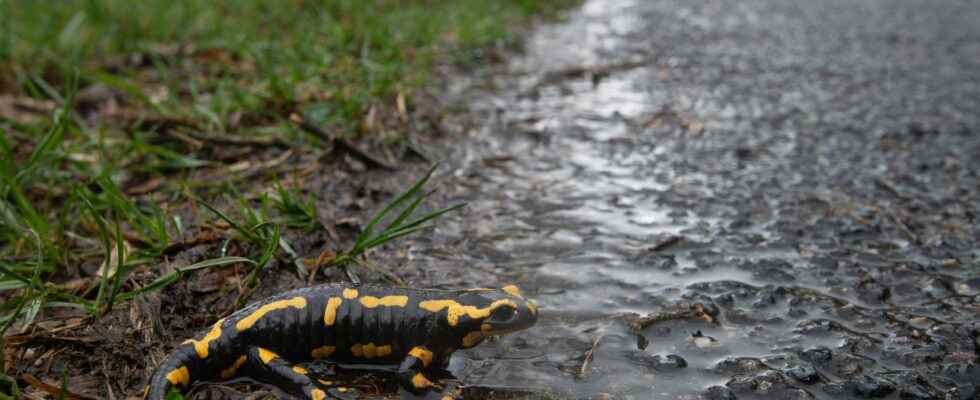At this level of investment, it is no longer a wave but a tsunami: until 2030, infrastructure spending in OECD countries could reach on average 3,500 to 4,000 billion dollars per year. Something to make you dizzy. At the same time, in the next twenty years, urban areas risk gaining an additional 1.2 million km2. Finally, 25 million kilometers of roadway and 335,000 km of rails would be needed by 2050 to support economic development.
It is difficult, in such a context, not to worry about the preservation of animal and plant species. “The budgets that we devote to this cause represent barely 70 to 90 billion dollars a year”, notes Yannick Autret, transport, energy and environment expert at the General Commission for Sustainable Development and secretary of the Infrastructures research program at Transports Territoires, ECOsystems and Landscapes (ITTECOP). Admittedly, society and companies have clearly understood that it is now necessary to act in favor of biodiversity. But the mobilization is for the moment not up to the challenges”. Because by continuing to develop at a frantic pace, the infrastructures generate a cascade of negative effects on living species.
Fabien Paquier, green and blue network project manager at the French office for biodiversity (OFB) draws up an alarming inventory: “the consequences go far beyond the destruction of certain habitats and direct collisions with vehicles. By splitting the territory, the road or rail infrastructures impact the needs of many animal species which must move to feed or reproduce”. Added to this are the effects of air and soil pollution in space but also time, which the green developments located along the expressways have great difficulty in compensating for.
“Most of these infrastructures integrate semi-natural spaces which nevertheless represent a non-negligible support for biodiversity”, wishes to specify Eric Tabacchi, CNRS researcher at the Functional Ecology and Environment Laboratory (EcoLab) in Toulouse. Sometimes certain species threatened by the disappearance of their natural habitats even find refuge in these environments. “In certain highly urbanized contexts, green outbuildings provide a movement corridor for species,” confirms Nicolas Hette-Tronquart, research officer at the OFB.
Roads, a cemetery for animals
However, most of the time, the positive effects of these areas are not very clear, according to an evaluation work carried out by the National Museum of Natural History. And the fairly high levels of disturbance of these environments encourage the presence of species deemed invasive. “Let’s be clear. We can improve the management of green dependencies by using fewer pesticides, for example. But if there were fewer roads, animal species would be better off”, summarizes Fabien Paquier.
For example, these strips of bitumen remain responsible for the death of two million hedgehogs per year. Near them, birds and mammals are much rarer. For scientists, the difficulty therefore lies in counterbalancing these effects. Ondine Deyrieux, transport infrastructure and ecological continuity project manager at the OFB, lists a series of good practices: avoiding areas rich in biodiversity when planning new infrastructure, increasing the number of wildlife crossings above or below the tracks rapids, limit speed on the roads, close certain arteries during the migration period, install signs coupled with wildlife detectors to warn drivers of the close presence of animals… “This last measure has proven its effectiveness in Haute- Savoie by reducing collisions by 80% during the first year”, specifies the scientist.
But faced with the steamroller of urbanization and the unbridled development of transport networks, do these efforts carry enough weight? “Sometimes, we can be discouraged by the difficulty of the task, recognizes Fabien Paquier. However, the technical solutions exist and it is possible to finance them”. Indeed, companies are investing more and more to limit their environmental impact. In addition, the 2030 National Biodiversity Strategy provides funds for the reduction of “black spots”, in places where the pressure on animal and plant species seems too strong.
Sharing scientific knowledge
At the same time, the Ministry for Ecological Transition has developed the specific research program (ITTECOP). Integrated into the major international Bison project (Biodiversity and infrastructure synergies and opportunities for european transport networks), it aims in particular to pool scientific knowledge and develop new indicators that local authorities or companies could take into account when developing transport networks. infrastructure.
“This is a crucial point. From the moment when the value of biodiversity is difficult to measure, we can consider – wrongly – that it has no impact”, explains Yannick Autrey. A report of this research work will be published in June. But it will probably take time to change practices. This is why some specialists would like the question of the justification of certain infrastructure investments to also be raised. “A recent report shows a quadrupling of these expenses between 2010 and 2022 in the G20 countries. In Indonesia, these sums represent 20% of the GDP. Do we really need all this?” Asks one of between them. Another way, more reasonable, is undoubtedly possible.
